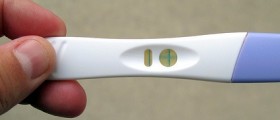
An LPD can either be too short or too long, but a long luteal phase and fertility questions are common because a woman may not be able to determine when she ovulates due to the overproduction of progesterone. When a woman has a LPD, it will likely go unnoticed until she has a problem when trying to conceive or possibly experiences a number of consecutive miscarriages. The majority of women that experience a luteal phase defect will have normal menstrual cycles and some could have a lighter period. Most often a LPD is noticed when a woman has been actively trying to conceive and does ovulation charting of the basal body temperature and the menstrual period may show up sooner than predicted, which are signs of something begin abnormal.
The most common way a doctor will diagnose a luteal phase defect is either with a blood test or through doing an endometrial biopsy. The blood test is done within 7 days of ovulation and the biopsy is performed about 1-2 days prior to the menstrual cycle. When an abnormality of the luteal phase is detected, a physician can recommend natural treatments or possibly want the woman to do progesterone supplementing. A long luteal phase and fertility is one of the more confusing of the two LPD, but with time and persistence, a woman can find ways to treat and manage the condition. While a LPD can be frustrating, it is not difficult to treat, depending on what type of LPD a woman has, a luteal phase defect will likely respond to the right treatment and a female can go on to become pregnant and have a baby at some point in time.
















Your thoughts on this
Loading...